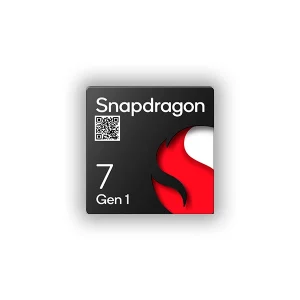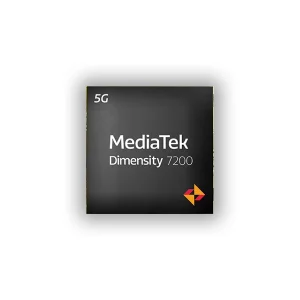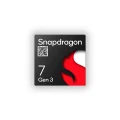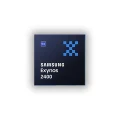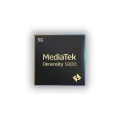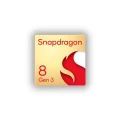Qualcomm Snapdragon 7 gen 1 Vs Dimensity 7200
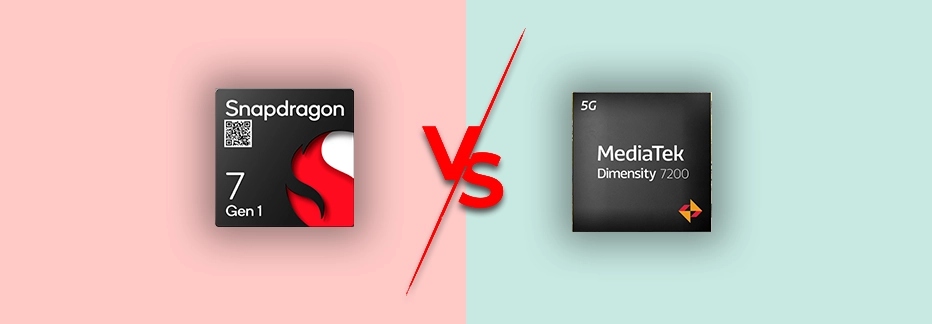
The Snapdragon 7 Gen 1 and Dimensity 7200 are two popular mid-range processors from Qualcomm and MediaTek, each with its own unique set of features and capabilities. In this article, we’ll be comparing the Qualcomm Snapdragon 7 Gen 1 vs Dimensity 7200, looking at their specifications, performance benchmarks, and other key features to help you determine which one is the better choice for your needs.
If you’re in the market for a new smartphone or device that uses one of these processors, it’s important to understand the differences between them in order to make a good decision.
You can also check its ranking in the Best Mobile Processor Ranking List. You Can Also Check Our Processor Comparison Tool, where you can compare any Processor to anyone.
Qualcomm Snapdragon 7 Gen 1 Vs Dimensity 7200 Specification Comparison
The Dimensity 7200 and Snapdragon 7 Gen 1 both have octa-core processors, but they differ in their configuration and size. The manufacturing process of the Dimensity 7200 is 4nm TSMC 2nd Gen, while Snapdragon 7 Gen 1 is based on Samsung 4nm node.
In terms of CPU configuration, the Dimensity 7200 has two performance cores 2x Arm Cortex-A715 up to 2.8GHz and Six Power Efficient Core 6x Arm Cortex-A510.
On the other hand, the Snapdragon 7 Gen 1 has one Cortex-A710 core running at 2.4 GHz, three Cortex-A710 cores running at 2.36 GHz, and four Cortex-A510 cores running at 1.8 GHz. While both processors have eight cores, their differences in architecture and clock speeds (17% higher CPU clock speed (2800 vs 2400 MHz)) can lead to varying performance levels in different use cases.
| Qualcomm Snapdragon 7 Gen 1 | Mediatek Dimensity 7200 | |
|---|---|---|
| Architecture | 1x 2.4 GHz – Cortex-A710 3x 2.36 GHz – Cortex-A710 4x 1.8 GHz – Cortex-A510 | 2x 2.8 GHz – Cortex-A715 6x 2 GHz – Cortex-A510 |
| Process | 4 nanometers | 4 nanometers |
The Dimensity 7200 uses the ARM Mali-G610 MC4 GPU based on Valhall 3, while the Snapdragon 7 Gen 1 uses the Adreno 662 GPU.
Snapdragon 7 Gen 1’s 7th Gen Qualcomm Hexagon is more advanced than Dimensity 7200’s MediaTek APU 650. Both processors support LPDDR5 RAM clocked at 3200 MHz and have a maximum RAM capacity of 16 GB. Dimensity 7200 Supports higher memory bandwidth (51.2 against 25.6 GB/s)
Mediatek Dimensity 7200 vs Snapdragon 7 Gen 1 Benchmark Comparison
“When comparing the benchmark scores of the Dimensity 7200 and Snapdragon 7 Gen 1, both processors offer powerful performance, but there are differences between them. The Snapdragon 7 Gen 1 Antutu score is 557,515, which is lower than the Dimensity 7200 Antutu score of 802255 (up to 42% higher).”
But in terms of CPU performance, the Dimensity 7200 Geekbench Score for a single-core score of 836 and a multi-core score of 2313 are lower than the Snapdragon 7 Gen 1 Geekbench Score for a single-core score of 836 and multi-core score of 3,089.
However, the difference in CPU performance is not significant, and both processors are capable of handling demanding tasks.
FAQ
Mediatek Dimensity 7200 vs Snapdragon 7 Gen 1 Which is the best processor?
we have to wait for more smartphone launches with this processor.
Which is the Processor in the Midrnage segment?
Both are great processor
Qualcomm Snapdragon 7 Gen 1 Vs Dimensity 7200 benchmark comparison?
The benchmark score comparison between the Qualcomm Snapdragon 7 Gen 1 Vs Snapdragon 778G shows that the Snapdragon 7 Gen 1 has lower scores in Antutu but higher in Geekbench tests.
Qualcomm Snapdragon 7 Gen 1 Vs Dimensity 7200 Specification Comparison
Info
| Manufacturer | Qualcomm Mediatek |
| Announced | 20 May, 2022 16 February, 2023 |
| Model | SM7450-AB Dimensity 7200 |
| Class | Midrange Mid-range |
CPU
| Size | 4nm 4nm TSMC 2nd Gen |
| Cores | 8 8 |
| CPU Configuration | 1x 2.4 GHz – Cortex-A710, 3x 2.36 GHz – Cortex-A710, 4x 1.8 GHz – Cortex-A510 2x Arm Cortex-A715 up to 2.8GHz and 6x Arm Cortex-A510 |
| High Frequency | 2400 MHz 2800 MHz |
| Performance Core | 1x 2.4 GHz – Cortex-A710 2x Arm Cortex-A715 up to 2.8GHz |
| Power Efficient Core | 4x 1.8 GHz – Cortex-A510 6x Arm Cortex-A510 |
| Core architecture | hybrid (big.LITTLE) hybrid (big.LITTLE) |
| Instruction set | ARMv9-A64 (64 bit) 2nd Gen Armv9 |
| L2 cache | 3 MB |
| Thermal Design Power (TDP) | 8 W - |
| Storage Type | UFS 3.1 UFS 3.1 |
GPU
| GPU | Qualcomm Adreno 662 ARM Mali-G610 MC4 |
| GPU frequency | Adreno 600 |
| GPU Architecture | Valhall 3 |
| OpenCL Version | 2.0 2.0 |
| DirectX Support | 12 12 |
| Vulkan version | 1.1 1.1 |
| Video Encoding |
H.264, H.265, VP9 H.264, HEVC |
| Video Playback |
Hybrid Log Gamma (HLG), HDR10+, H.264 (Advanced Video Coding (AVC)), VP9, VP8, H.265 (High-Efficiency Video Coding (HEVC)), HDR10
H.264, HEVC, VP-9, AV1 |
| Gaming | Snapdragon Elite Gaming MediaTek’s HyperEngine 5.0 gaming |
NPU
| APU / NPU / AI Proc. / Neural IP | 7th Gen Qualcomm® Hexagon MediaTek APU 650 |
| Extra Feature |
- Next-Gen Qualcomm® Hexagon™ Tensor Accelerator (HTA) - 3rd Gen Qualcomm® Sensing Hub |
Memory
| RAM Type | LPDDR5 LPDDR5 / LPDDR4 |
| RAM frequency | 3200 MHz 2133 MHz |
| RAM Max | 16 GB 16 GB |
| Max Bandwidth | 25.6 Gbit/s 51.2 against |
| Bus Speed | 2x 16 Bit 2x 16 Bit |
Connectivity
| Cellular Modem | Snapdragon™ X62 5G Modem-RF System Mediatek 5G Modem |
| Cellular Technology |
TD-SCDMA, 5G NR, HSPA, sub-6 GHz, Dynamic Spectrum Sharing (DSS), FDD, 5G mmWave, NSA (non-standalone), CDMA 1x, EV-DO, LTE support for CBRS, TDD, LTE, WCDMA
Sub-6GHz (FR1) up to 2CC (200MHz), NR TDD/FDD, 3GPP R16 Dual 5G SIM (5G SA + 5G SA) & Dual VoNR MediaTek 5G UltraSave 2.0 |
| 5G Modem | |
| 5G Network | 4 carriers (mmWave), 2x2 MIMO (mmWave), 4x4 MIMO (Sub-6) Sub-6GHz (FR1) up to 2CC (200MHz), NR TDD/FDD, 3GPP R16 |
| 5G mmWave | |
| 5G sub-6 GHz | |
| Download Speed | Up to 4.4 Gbps 4.7Gbps |
| Dual SIM |
Wireless System
| wireless System | Qualcomm® FastConnect™ 6700 System Mediatek Wireless System |
| Wi-Fi Band | 802.11a, 802.11b, 802.11g, 802.11n, 802.11ac, 802.11ax (6 GHz, 2.4 GHz, 5 GHz) Wi-Fi 6E 2x2 (6/5/2.4GHz) |
| WiFi-5 | |
| WiFi-6 | |
| WiFi-6E | |
| Wi-Fi 7 | |
| Download Speed | Up to 2.9 Gbps |
| Bluetooth | Bluetooth® 5.2 Bluetooth® 5.3 |
| GPS | GLONASS, NavIC, Beidou, GPS, QZSS, Galileo GPS L1CA+L5 / BeiDou B1I+ B2a + B1C / Glonass L1OF / Galileo E1 + E5a / QZSS L1CA+ L5 / NavIC |
| USB | USB-C, USB 3.1 USB-C, USB 3.1 |
| NFC |
ISP
| ISP | Qualcomm® Spectra™ MediaTek Imagiq 765 |
| Single Camera | • Up to 200 Megapixel Up to 200MP |
| Multi Camera |
Up to 64+20 MP dual camera Up to 25 MP triple camera 32MP + 32MP Dual Camera |
| Video capture |
• 4K HDR Video Capture @ 30 FPS • Slow-mo video capture at 720p @ 480 FPS 4K HDR video capture |
| Video Codec | HDR10+, HDR10, HLG H.264, H.265, AV1, VP9 |
| Extra Feature |
• Triple 14-bit ISPs • Up to 2.5 Gigapixels per Second computer vision ISP (CV-ISP) |
Display and Audio Support
| Display Support | FHD+ @ 144 Hz Full HD+ |
| Refresh Rate | 144Hz 144 Hz |
| Extra Feature |
• 10-bit color depth, Rec. 2020 color gamut • HDR10 and HDR10+ • Demura and subpixel rendering for OLED Uniformity |
| Audio Playback | AAC, AIFF, CAF, MP3, MP4, WAV AAC, AIFF, CAF, MP3, MP4, WAV |
| Bluetooth Audio | Qualcomm® aptX™ Voice, Qualcomm® aptX™ Adaptive, Qualcomm® aptX™ Lossless |
Security
| Security Features |
Qualcomm® 3D Sonic Sensor Max, Qualcomm® 3D Sonic Sensor Secure Processing Unit (SPU): Biometric Authentication (Face), Biometric Authentication (Fingerprint), Biometric Authentication (Voice), Biometric Authentication (Iris) Fingerprint and Face Unlock |
| Fingerprint Sensor | |
| Face Detection |
Charging
| Charging Speed | Qualcomm® Quick Charge™ 4+ technology |
Benchmarks
| AnTuTu benchmark scores | 557515 802255 |
| Geekbench scores |
Single-Core Score - 836 Multi-Core Score - 3089 Single-Core Score - 856 Multi-Core Score - 2313 |
| 3DMark | 3092 |

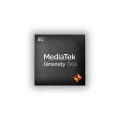
|

